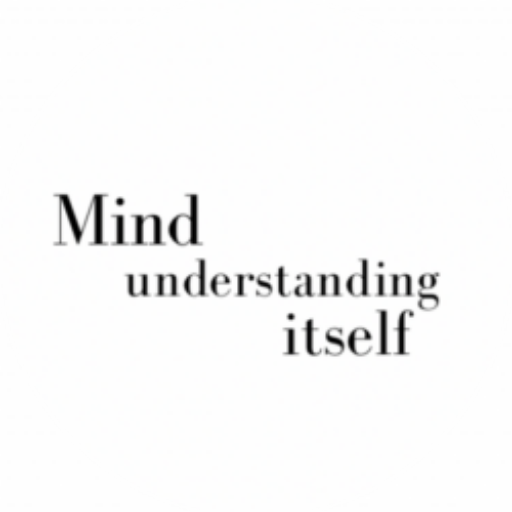How to Challenge Maladaptive Assumptions in CBT
Maladaptive Assumptions in CBT
In one of our previous posts, we examined Maladaptive Assumptions in Cognitive Behavioral Therapy (CBT) and Techniques for Identifying Them. In this post, we share CBT techniques for challenging maladaptive assumptions.
As you might recall, the ultimate goal of challenging a maladaptive assumption in Cognitive Behavioral Therapy is to find a more realistic, more logical, and more adaptive version of our assumption.
The problem with maladaptive assumptions is NOT that they are undoubtedly wrong, but simply that they are unhelpful, not helping us reaching our goals, as the name maladaptive suggests.
An Example
Let’s think of an example of a man, George, who doesn’t like attending social events, and avoids them whenever he can. When he has to attend an event, he stands it with feelings of discomfort.
Especially, when he “has to” meet someone, he experiences high levels of anxiety.
When we search for his thoughts at those peak moments of anxiety,
“I am losing control. They can tell I am nervous. They will think I am a loser.” come up as his automatic thoughts.
When we further search for the assumptions underlying these automatic thoughts, we find out his maladaptive assumption as
“Being nervous about meeting new people means that something is wrong with me.”
Let’s assume that when we ask George what he remembers from his childhood regarding with these anxiety symptoms. He tells us that he was raised by a mother who finds her son very shy, and and thinks he should be more sociable. George, many times, heard her mother talk about his “shyness” to strangers: “His brother is very talkative. I think he took his shyness after his father.”. He also remembers that his mother used to force him into talking to people. Many examples like these made him believe that “not being like his sociable brother” means that there is something wrong with him.
Looking at this story, having the maladaptive assumption, “Being nervous about meeting new people means that something is wrong with me.”, seems quite plausible, doesn’t it?
However, although “having this assumption” is plausible, “the content of the assumption” is NOT. In fact, being nervous about meeting new people is not so uncommon. Many people are not comfortable meeting new people.
Additionally, and more importantly, believing this assumption is NOT HELPING HIM. It makes him even more nervous. He ends up feeling bad about himself, which eventually leads to depressive feelings.
The thing is that all of our assumptions have some story behind them. There is a reason they exist, and this reason is usually that believing them was once helpful for us. We did not have any other choice at that particular time of our lives. However, it is also very likely that these maladaptive assumptions are not helping us any longer, in this part of our lives. This is why it is very important that we challenge maladaptive assumptions.
There are several ways to challenge maladaptive assumptions in Cognitive Behavioral Therapy. Some of them are through modifying cognitions, also called cognitive restructring, and some of them through behavioral means in the form of activity assignments, exposures to fearful situations, working on assertiveness etc.
Here, in this post, we share some of these techniques that can be used in order to challenge and modify maladaptive assumptions.
CBT Techniques for Challenging Maladaptive Assumptions
Before we start, if you need to identify the maladaptive assumption to be challenged, first, you can use the techniques in our previous post.
If you have already identified it, you can start with asking:
How much do I believe in this assumption (out of 100)?
1. Look for Evidence for/against the Assumption
Maybe, you have been holding onto this assumption for your whole life.
Have you ever questioned though if it is true? If it is 100 % true???
First, find evidence in favor of your assumption.
What evidence do I have supporting this assumption?
How did I come to this conclusion?
If you were in front of a jury, and you had to prove that your assumption is true, what would you tell them? What kind of evidence you would show them to prove that your assumption is true?
Second, look for evidence that your assumption may not be true.
Now, if again you were in front of the jury, and this time you had to prove that what you’re believing is not true, what would you tell them?
While doing this, you might realize that your brain is very good at finding evidence for what it thinks and believes, but not so good at finding arguments to prove that your assumption may not be true. This is because that is what our storytelling brains do, it works to validate what it thinks. That’s its job. And since at the beginning you are already believing your assumption, your brain will find it easier to find evidence to prove what it is already believing!
To be able to deal with this, you can further ask yourself:
Can I be absolutely sure that my assumption is true?
Did I have any experiences before that can show me that my assumption is not true?
What would a loving friend would tell me if she/he were to show me that this assumption is not true?
If my friend were in the same situation, and thought the same way, what would I say to him to show him that his assumption is not true?
If there was a law based on this assumption, and if I didn’t obey to that law, how would I justify my behavior? What would I tell to people who judge my behavior?
Isn’t there any evidence that I ignore or I don’t consider important, even if it is very little?
Example
Continuing with the example of George, some of the questions he can ask himself using the techniques in this part can be as follows:
“Is it true that being nervous about meeting new people means something is wrong with me? What kind of experiences made me have this assumption?
Whose idea was this anyway? I remember my mother’s words about me, and her insistence about me chatting with others. I remember that I felt I should have been more like my brother. I thought he was normal and I was not. Was I true though? Was my mother true?
“Is this enough to prove my assumption right? Is it so abnormal being nervous about meeting new people? What do I mean by there is something wrong with me anyway? Does it mean that I am broken? That I am a weirdo? That I cannot be fixed? But that cannot be true. I remember times that I felt “right” about myself too.”
“Some of my qualities are liked and some are not. Like this is true for everyone else. Does this mean that there is something wrong with me when I am not %100 liked and approved by others? by my mother? For example, if I don’t like Leon’s accent, does it mean that there is something wrong with him? No. It only means that I don’t enjoy his accent, and it is my problem. The same way, my mother’s not approving my “shyness” was her problem.”
You can also use the technique that we call the survey method, which is basically doing some research about the reality.
For example, in case of George, and his assumption that being nervous about meeting new people means there is something wrong with him, he can test whether his assumption is valid. In order to do this, he can do a little research asking his friends/relatives how they feel about meeting new people.
2. Look for an Alternative Explanation
Having found that our maladaptive assumption might not be 100 % true, we can look for an alternative explanation.
Is it possible that my assumption is not the best that explains the situation?
Is there any possibility that there is another explanation to this situation?
If I wouldn’t be feeling so . . . right now, would I assume differently?
Is it possible that I could have a different kind of assumption in the same situation?
Have I ever been in a situation like this before? What happened then? What did I learn/ what do I remember from that situation that might help me now?
- Imagine someone else being in the same situation, and that she/he is not feeling the way you are feeling right now. What is that person thinking about the situation? Thinking that way WHAT MIGHT BE HIS ASSUMPTIONS
Example
In case of George, some of the questions he can ask himself using the techniques in this part can be as follows:
“Is being nervous about meeting new people really so uncommon? What if other people feel the same way too? Maybe to a lesser extent?
“Actually, when I think about it, I don’t always feel the same amount of nervousness in these kind of situations. It depends on many factors such as the person I am about the meet, my mood on that day, and even how many cups of coffee I have that day. There are even times, I feel relaxed. For example, talking about topics I am good at. However, when I start anticipating the nervousness, I invite it myself that I can see.”
“So if a person seems fine meeting with and talking to strangers, I would say that he is not concerned about being nervous, even if he is a little. He doesn’t make himself busy thinking about his nervousness, instead he must be focused on listening and simply answering others.”
3. Imagine the Worst and Best Possible Scenarios
Imagine the worst and the best possible outcomes, and then, try to find the most logical one. To be able to do this, ask yourself:
- Firstly,
What is the worst thing that can happen?
Can I deal with it?
Can I live with it?
- Secondly,
What is the best thing that can happen in this situation?
- And then, thirdly,
What is the most possible, most realistic explanation?
Example
In case of George, especially, thinking about the best case scenario might help. Here is how he can do it:
“How would I define the most perfect situation? What are my expectations? Not getting nervous at all meeting new people? No heart beat? How much of what is allowed? None? “
“Do you think this is possible? Realistic? Human?”
“What might be a more likely goal?”
4. Meaning of Having This Assumption
As mentioned before, there are reasons behind our maladaptive assumption.
Why do I have this assumption?
What does this all say about me?
What does this assumption say about my wishes, my values, my goals?
What is/was my wish so that I have this assumption?
What is/was my purpose so that I have this assumption?
What do/did I value so that I have this assumption?
Example
In case of George, he can find the meaning of his assumption
inquiring:
“I am liked and approved by others, especially my mother. It is very likely that this was my wish when I was a child, but is it still so?
“Do I wish that I were no different than my brother, or less like my father?”
“How do I wish I could be really in my relationships with others? If I didn’t have these experiences, or if didn’t interpret them as the way I did, how would I wish my social life to be like? Maybe if I weren’t so concerned about all these… I could even enjoy social interactions. Our next door neighbor, Joanne, I guess I would enjoy having a word with her sometimes.”
5. Examine the Result of Believing the Maladaptive Assumption
As I explained before, in our post on automatic thoughts, having a thought and believing it are different things. We can have certain kind of thoughts, and choose not to believe them. Like when the voice in your head says “You won’t be able to do it. This is a waste of time.”, and you keep trying. Same way, we can have certain maladaptive assumptions and choose not to believe them so that we can modify and challenge them.
Here, we try to understand what is believing our assumption costing us.
Examine what believing that particular assumption is doing for your life, for your purposes, for your wishes, and values. To be able to do this, ask yourself:
What is the function of believing this thought?
How do I feel when I believe this thought?
How do I act when I believe this assumption?
How does it affect my life? my wellnes? my relationships? my relationship with . . . ?
Does believing this assumption make it easier for me to achieve my goals or does it make it harder?
Does believing this
assumption make it easier for me act according to my values? my wishes?
Is believing this
assumption helpful or harmful (in the long run)?
IF I didn’t have this assumption or IF I didn’t believe it (although it is there, in my mind),
…would I feel like this?
…how would I feel?
…would I do the things I do?
…would I still avoid … ?
… would I be able to do … ?
…how would I act?
…how would I be in my relationship with . . . ?
How would it affect my life if I didn’t believe this assumption?
Could it be easier to achieve my goals if I didn’t believe this assumption?
Would it be easier to act according to my values? my wishes?
Example
When George believes his assumption, he anticipates the feelings of nervousness, he avoids social situations, so he misses opportunities for good relationships that he longs for. What if he did not? I guess he would be able to have a word with Joanne, wouldn’t he?
6. Do What You can Do
- Considering all the evidence from testing the accuracy of your assumption, and
- All the alternative explanations that you could find, and
- Having reached a more logical explanation of thesituation, and
- Being more aware of your purposes, wishes, values, and
- Knowing that this kind of thinking does not make it easier but harder to make your purposes, wishes to come true, or makes it harder for you to act according to your values
Ask yourself:
What is it that I can do in this situation to act in line with my values?
Is there anything I can do in this situation to make it easier to reach my purposes, have my wishes?
IF there is anything, even a tiny little thing I can do,
How can I do it?
- IF someone else would be in the same situation, thinking exactly what you’re thinking, and believing exactly what you’re believing, feeling exactly how you feel, and he/she has wishes, purposes similar to yours, and he/she values what you value:
What would you suggest this person to do in this situation? Even if it’s a tiny little thing…
Example
What do you think George can do?
Now please ask yourself again:
How much do I believe in this assumption (out of 100) now?
This is all for today. I will edit this post as it is necessary.
If you have a maladaptive assumption you are having trouble with, you can write it to me, or at the comments section below, and we can try working on it together.
Thank you for reading.
Aysegul.
References
Hope D. A., et al. (2010). Managing Social Anxiety: A Cognitive Behavioral Therapy Approach Tehrapist Guide. Oxford University Press.
Leahy R. L., et al. (2012). Treatment Plans and Interventions for Depression and Anxiety Disorders. New York, NY:The Guilford Press.







7 Comments